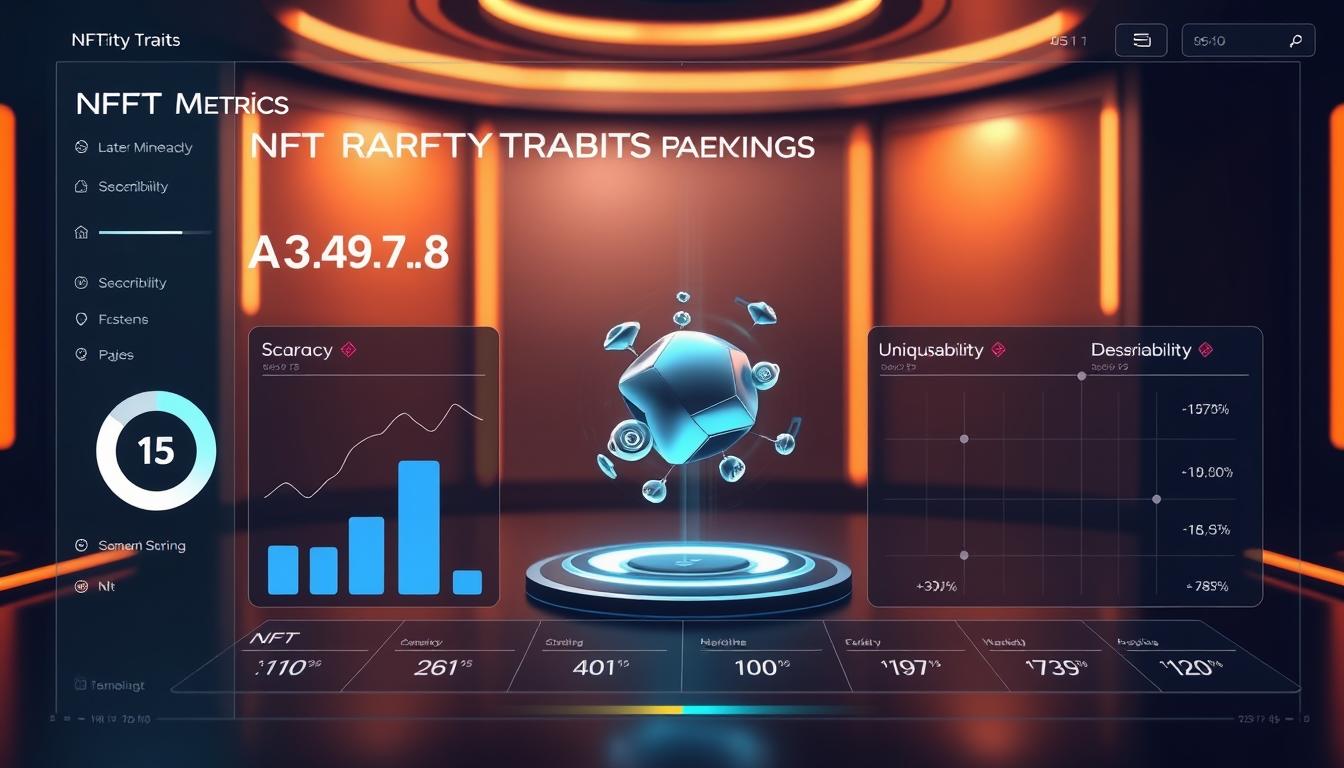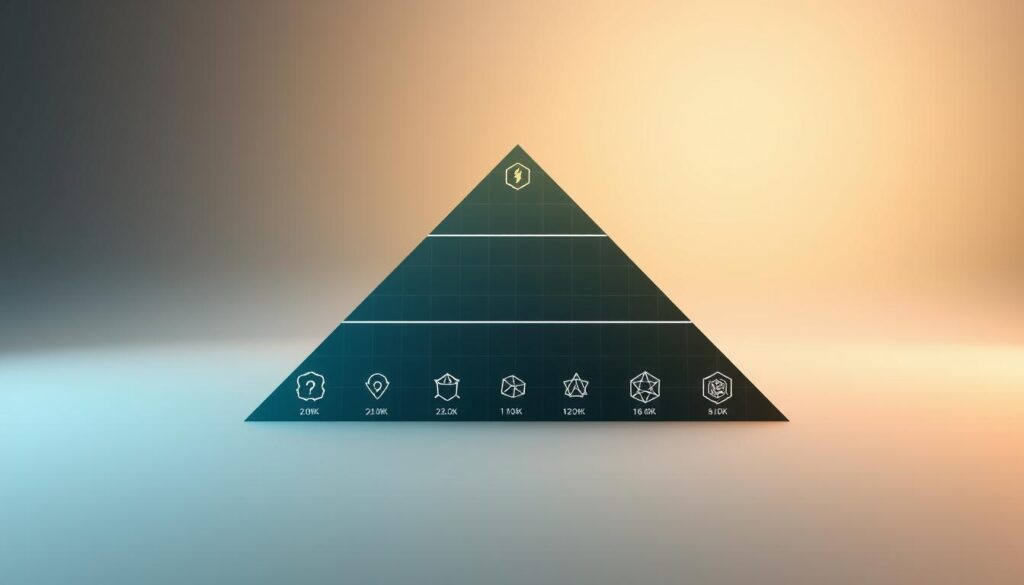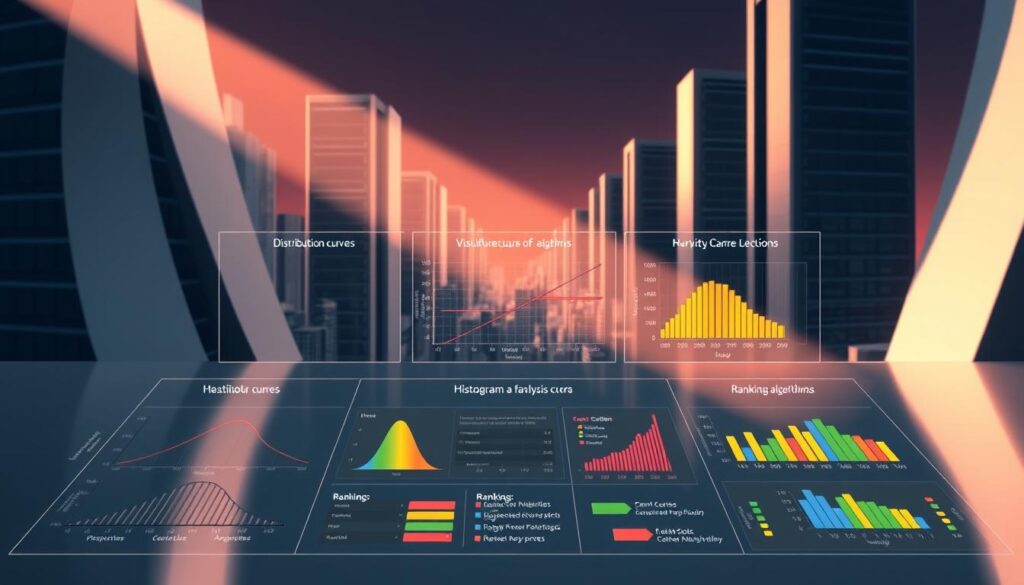Now Reading: Learn About NFT Rarity Traits Ranking System
- 01
Learn About NFT Rarity Traits Ranking System
Learn About NFT Rarity Traits Ranking System

Welcome to our comprehensive guide on digital collectibles. This article offers a clear introduction to a fascinating part of the crypto world. We provide essential information for anyone looking to understand this dynamic space.
The concept of rarity is central to the value of these digital tokens. It directly influences how collectible and desirable an item is. Understanding this is crucial for navigating the market effectively.
We will explore the principles behind the systems that assess uniqueness. These frameworks help collectors and creators evaluate individual pieces within larger groups. This knowledge is vital for making informed decisions.
Our goal is to break down complex ideas into simple explanations. Whether you are new or experienced, this resource offers valuable insights. You will learn how to apply this knowledge in a practical way.
Key Takeaways
- Grasp the foundational concepts that govern the value of digital collectibles.
- Discover why an item’s scarcity is a primary driver of its desirability and price.
- Learn how assessment frameworks help determine the uniqueness of individual assets.
- Acquire practical knowledge to evaluate your own holdings or potential acquisitions.
- Understand how these principles empower smarter participation in the market.
Understanding NFT Rarity and Its Significance
Delving into the world of digital assets reveals that not all tokens are created equal. Grasping what makes one item more sought-after than another is fundamental for any collector.
What Makes an NFT Rare?
Every non-fungible token is, by definition, a unique digital item. However, its true scarcity is measured statistically against others in its group.
Several elements contribute to this. The total number of items in a set is a primary factor. The uniqueness of individual characteristics compared to the group is another major consideration.
Historical importance or a link to a famous person can also significantly boost an asset’s profile. These aspects add a layer of prestige that resonates with collectors.
Impacts on Value and Collectability
The connection between scarcity and price is straightforward economics. Items with limited availability often attract more interest, which can drive up their market price.
This is a key difference from fungible currencies like Bitcoin, where one unit is identical to another. Here, each digital item possesses a distinct set of features that defines its appeal.
Combinations of uncommon characteristics can make an asset exceptionally rare. It is often the interplay of multiple unique factors that creates the most desirable pieces.
| Factor | Description | Impact on Profile |
|---|---|---|
| Collection Size | The total number of tokens issued. | Smaller editions generally increase scarcity. |
| Attribute Scarcity | How common specific features are within the set. | Less common traits significantly boost uniqueness. |
| Historical Context | Association with a significant event or moment. | Adds narrative value and long-term desirability. |
| Celebrity Link | Involvement or ownership by a notable figure. | Drives immediate attention and perceived prestige. |
Exploring the Evolution of NFT Collectibles
The journey of digital collectibles is a fascinating story of technological innovation. It shows how creative expression has merged with advanced digital ledgers. This combination has created a vibrant new sector in the crypto world.
The Role of Blockchain Technology
Blockchain technology is the foundation for this entire ecosystem. It provides a secure and transparent way to prove who owns a digital asset. This solves a major problem in the digital world: verifying authenticity.
Each token is a unique digital item recorded on a distributed ledger. This record cannot be altered or copied. It gives creators and collectors confidence in the asset’s history and ownership.
Many popular digital art sets are created using generative algorithms. These systems produce thousands of unique pieces from a set of predefined characteristics. The algorithm ensures no two items in a collection are exactly the same.
Artists have embraced this technology to expand their reach. They can now connect with a global audience through various online marketplaces. This has opened up new opportunities for creative talent worldwide.
Market Trends and the Rising Popularity of NFTs
Collectible digital tokens have experienced a surge in mainstream recognition and trading volume. This growth reflects changing attitudes toward digital ownership in the crypto space.

The digital collectibles market has evolved from niche experiments to established asset classes. High-profile sales have captured public imagination and driven increased participation.
Historical Milestones in the NFT Space
Several key events mark the maturation of this market. Record-breaking sales figures demonstrate the growing acceptance of digital collectibles.
Market activity shows consistent growth over time. Both established artists and newcomers now participate actively in crypto trading platforms.
| Milestone | Year | Market Impact |
|---|---|---|
| First Major Art Sale | 2017 | Established digital art as valuable collectibles |
| Sports Memorabilia Entry | 2019 | Expanded market beyond digital art |
| Brand Partnerships | 2021 | Legitimised sector with corporate involvement |
| Virtual Fashion Items | 2022 | Created new category of digital collectibles |
The price disparity between physical and digital items illustrates unique market dynamics. Scarcity and blockchain verification create value beyond traditional expectations.
Statistical analysis confirms that rare items consistently command premium valuations. This trend continues to shape market behaviour and collector strategies.
NFT Rarity Traits Ranking System
Evaluating digital collectibles requires a structured approach to measure their unique qualities. This is where a standardised framework becomes invaluable. It transforms complex data into a simple, comparable score.

This method aggregates all characteristics into a single index. It allows every item in a group to be positioned based on a clear parameter.
Key Features and Benefits
Effective platforms offer comprehensive data collection and transparent calculations. A user-friendly interface is another critical feature. It presents complex information in an accessible format.
The primary benefit is making informed purchasing decisions. These tools promote fair market pricing and increase valuation transparency. They can also help identify undervalued assets early.
Different communities prioritise various aspects. Some focus on the total number of attributes an item possesses. Others value specific, uncommon combinations of features.
The CryptoPunks community, for example, highly values items with seven attributes. This preference shapes the entire market perception for that collection. A good platform balances algorithmic objectivity with these community-driven values.
As a collection grows, manually comparing items becomes impossible. Automated analytical tools are essential for navigating large sets. They provide clarity and save significant time for collectors.
Methods to Calculate Rarity Scores
Various calculation models exist to quantify the scarcity of individual digital assets. Each approach offers a different way to measure uniqueness within a collection.
Understanding these methods helps collectors make more informed decisions. The results can vary significantly depending on which model you use.
Trait Rarity Model
This represents the simplest approach to determining a digital item’s profile. It focuses exclusively on the single rarest characteristic an asset possesses.
The major drawback is its narrow focus. It ignores the cumulative effect of multiple uncommon features.
An item with one extremely rare attribute might receive a high score. Meanwhile, another with several moderately rare characteristics could be undervalued.

Average Trait Rarity and Statistical Approaches
The average method calculates the mean value across all characteristics. This provides a more holistic view than the single-trait model.
However, averaging can dilute the impact of exceptionally scarce features. Super rare traits lose prominence when combined with more common ones.
Statistical rarity uses multiplication instead of averaging. For example, traits appearing in 20% and 50% of a collection give a 10% overall score.
This multiplicative approach emphasises combined scarcity. It often produces dramatically different results from averaging methods.
| Method | Calculation Approach | Key Advantage | Main Limitation |
|---|---|---|---|
| Trait Rarity Model | Focuses on single rarest characteristic | Simple and straightforward | Ignores cumulative trait effects |
| Average Trait Rarity | Calculates mean of all trait rarities | Considers all attributes | Dilutes impact of rare traits |
| Statistical Rarity | Multiplies individual trait percentages | Emphasises combined scarcity | Can overly penalise common traits |
| Rarity Score Formula | 1 / (trait frequency ratio) | Intuitive numerical results | Requires complete collection data |
The rarity score formula used by popular platforms creates intuitive numerical values. Higher numbers indicate greater scarcity, making comparisons straightforward.
This method has gained widespread adoption across marketplaces. It balances mathematical precision with practical usability for collectors.
Understanding Statistical Rarity in Depth
Moving beyond basic calculation models reveals more sophisticated approaches to evaluating digital assets. Statistical methods offer a mathematically robust way to assess true uniqueness within a collection.
This approach provides deeper insights than simpler models. It captures the complex interplay between multiple characteristics.

Multiplicative Methods for Score Calculation
The multiplicative approach compounds individual trait percentages through multiplication. This creates exponential differences between common and rare digital items.
When an asset possesses several uncommon features, their combined effect becomes significant. The mathematical process ensures items with multiple rare characteristics receive appropriately high scores.
This methodology proves particularly effective for large collections with numerous attributes. The multiplication of percentages produces highly differentiated results that reflect genuine statistical uniqueness.
Background processes handle complex calculations automatically based on project specifications. Platforms then present simple numerical scores for user-friendly decision making.
The transformation of intricate data into accessible numbers democratises information. Participants without mathematical expertise can still make informed choices about their acquisitions.
Real-World Examples from Leading NFT Collections
Leading digital collectible sets offer compelling case studies of uniqueness valuation. These projects demonstrate how specific characteristics drive market behaviour and collector interest.
Bored Ape Yacht Club and CryptoPunks
The Bored Ape Yacht Club provides excellent examples of how attributes influence value. The Solid Gold Fur characteristic appears in only 46 apes within the collection. This represents just 0.46% of the total pieces.
BAYC #7495 demonstrates that cumulative uniqueness often matters more than single ultra-rare features. It possesses a dagger mouth, cross earring, cyborg eye, and DMT fur combination. This digital asset has never been sold despite numerous generous offers.
The “Bored Unshaven Pizza” mouth represents the single rarest attribute at 0.26%. CryptoPunks established many conventions now standard across collections. Their community emphasises attribute count alongside specific feature scarcity.
Emerging Trends in Generative Art
Moonbirds collection shows quantifiable evidence of uniqueness impact on price. Floor values sit around 9 ETH while the most atypical members sell for over 270 ETH. This represents more than thirty times the baseline value.
Azuki’s success in 2022 demonstrates how aesthetic appeal combines with scarcity. The anime-themed project’s spirit characteristics became culturally significant within their community. Emerging trends show increasing sophistication in feature design and distribution.
| Project | Collection Size | Key Rare Feature | Market Impact |
|---|---|---|---|
| Bored Ape Yacht Club | 10,000 pieces | Solid Gold Fur (0.46%) | Substantial price premiums |
| CryptoPunks | 10,000 tokens | Attribute count emphasis | Established industry standards |
| Moonbirds | 10,000 items | Atypical member combinations | 30x floor price multiples |
| Azuki | 10,000 assets | Spirit characteristics | Cultural significance |
These real-world examples prove that systematic assessment directly correlates with market performance. Both creators and collectors benefit from understanding these principles.
Utilising NFT Rarity Tools Effectively
Navigating the digital collectibles market effectively requires the right analytical resources. Several specialised platforms exist to provide the crucial data needed for informed decisions. Understanding how to use these services is a key skill for any collector.
How to Use Platforms like Rarity.tools
Rarity.tools is a well-established platform for checking the standing of famous crypto collectibles. It lists major projects and provides transparent scores. Creators can list their items for a fee, which helps maintain data quality.
The tool offers sophisticated filtering options. You can search by ID, price range, or specific characteristics. This helps you find assets that match your precise criteria quickly.
Comparing Multiple Tools for Accurate Results
Rarity Sniper is another comprehensive tool, covering thousands of collections across many blockchains. It boasts an intuitive interface and an active community. OpenSea, the largest marketplace, offers volume and price data but lacks a built-in scoring system.
Moby.gg focuses on real-time assessments, showing market movements over custom timeframes. Since many of these platforms are free, it is wise to check multiple sources. Comparing results improves assessment accuracy and reduces reliance on a single methodology.
Cross-referencing scores with actual sales data and community sentiment provides a more holistic view. This strategy helps contextualise algorithmic rankings within broader market dynamics.
Practical Guidance for Ranking Your NFTs
Taking control of your digital collectibles’ valuation requires practical tools and a clear methodology. This section provides actionable steps to assess your assets effectively.
Step-by-Step Process to Check Rarity
Begin by selecting a reputable platform that covers your specific collection. Look for services offering transparent calculation methods aligned with community standards.
Once you access your collection, familiarise yourself with the interface. Most platforms provide filtering options for price ranges and specific characteristics.
Use direct ID search when you own a particular token. This saves time compared to scrolling through thousands of pieces.
Compare your asset’s score against the collection’s distribution. This helps determine if it falls into common or rare categories.
Cross-reference platform data with actual marketplace listings. Validating statistical scores against real trading data improves accuracy.
Examine the detailed breakdown of attributes. Understanding which features contribute most to value is crucial information.
Advanced features like price estimation functions identify potential discrepancies. These tools highlight undervalued opportunities in the market.
Document your findings for future reference. This data proves valuable when making long-term decisions about your crypto assets.
Engage with community discussions to understand cultural factors. Some characteristics hold significance beyond pure numbers.
Regularly recheck rankings as methodologies evolve. Staying current ensures your assessments reflect latest best practices.
Remember that successful participation considers both quantitative and qualitative factors. Project reputation and community strength influence value alongside statistical data.
Conclusion
Quantitative analysis now provides concrete foundations for what was once largely subjective valuation in the digital art space. These analytical approaches have transformed how collectors and creators assess digital assets.
Understanding these frameworks empowers market participants to make informed decisions based on data rather than speculation. The evolution of sophisticated platforms has democratised access to complex statistical insights.
While scarcity remains a significant value driver, it operates alongside aesthetic appeal and community strength. Multiple calculation methodologies offer distinct perspectives on what constitutes uniqueness within each collection.
Leading analytical services transform raw blockchain information into actionable intelligence. For comprehensive investment tracking capabilities, these tools provide essential market context.
Mastering digital asset assessment represents an essential skill for anyone participating in this evolving crypto market. It enables confident participation through transparent, data-driven decision making.
FAQ
What is a rarity score in the context of digital collectibles?
A rarity score is a numerical value assigned to a specific token within a collection. It quantifies how uncommon its attributes are compared to others in the same set. This score helps collectors gauge an item’s uniqueness.
How does the rarity of a piece influence its market price?
Scarcity often drives value. Items with rare characteristics are typically more sought-after, which can lead to higher trading prices on marketplaces. However, other elements like artistic appeal and community sentiment also play significant roles.
Which platforms can I use to check the rarity of my digital assets?
Several online tools specialise in this analysis. Platforms such as Rarity.tools and TraitSniper provide detailed breakdowns of attribute scarcity for various collections, offering valuable data for informed decision-making.
Can you explain the ‘trait rarity model’ in simple terms?
This model assesses each characteristic individually. It calculates how frequently a specific feature appears across the entire collection. The less common a trait is, the more it contributes to the overall rarity score of that particular token.
Are generative art collections like Bored Ape Yacht Club graded using these systems?
Yes, absolutely. Prominent sets, including Bored Ape Yacht Club and CryptoPunks, are commonly evaluated using these ranking methodologies. Their algorithmically generated variations make them ideal for this type of statistical analysis.
What is the best way to compare results from different rarity tools?
For the most accurate assessment, it is advisable to consult multiple sources. Cross-referencing data from several platforms can provide a more comprehensive view and help identify any discrepancies in the scoring process.













